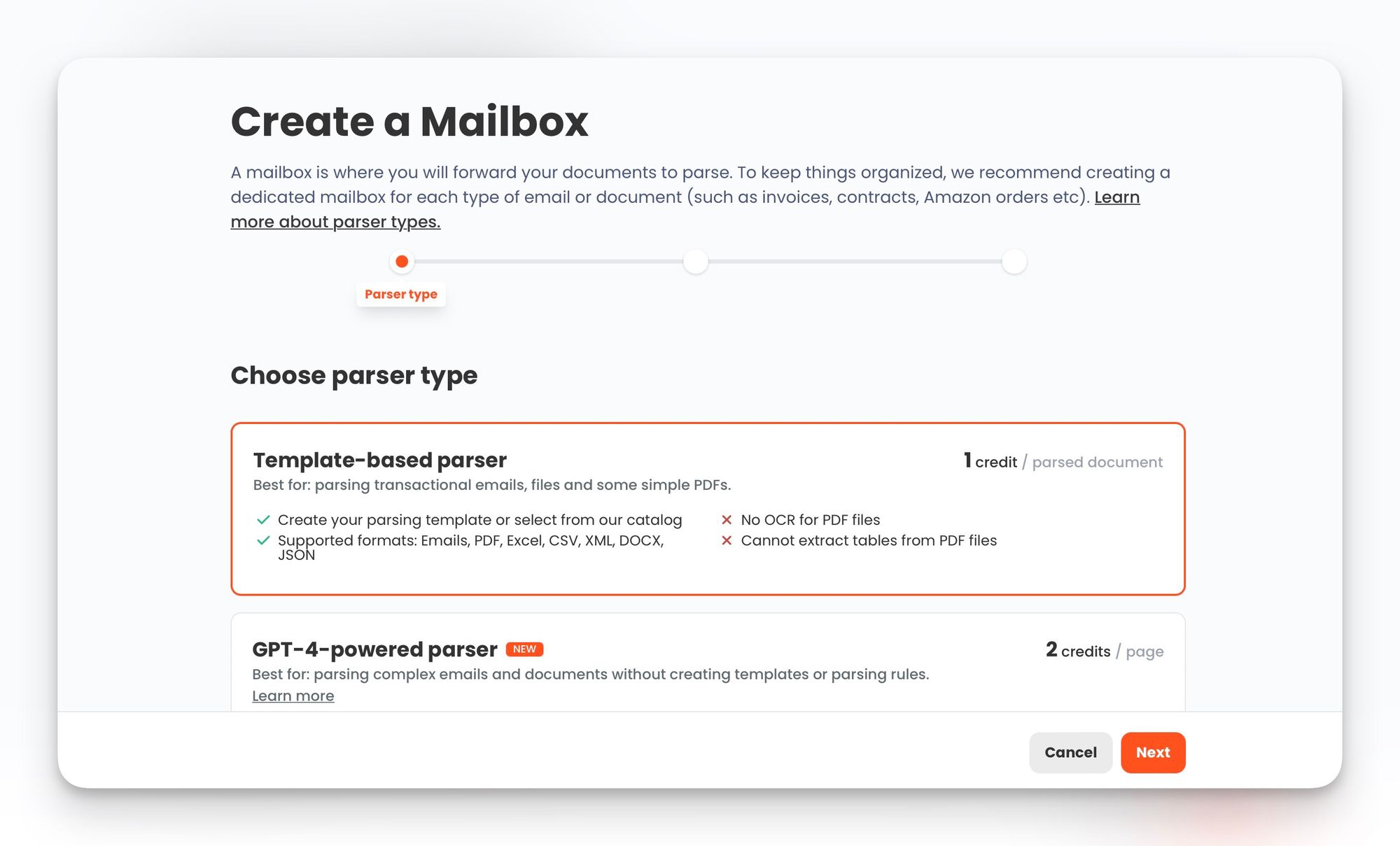Automotive Industry: Extracting Car Sales Leads From Emails and XML ADF

To keep the automotive industry running smoothly, a consistent supply of high-quality leads is essential. Within this industry, two robust sources of sales leads exist: emails and XML ADF (Auto-lead Data Format) files.
Picture this: the inbox of an automotive business is like a treasure trove of valuable information.
Buried within those emails are hidden gems that hold the key to unlocking new sales opportunities. By skillfully extracting pertinent data from these electronic missives, automotive businesses can gain valuable insights into potential buyers and their preferences and rev up their sales and marketing strategies to hit the accelerator.
Extracting this data from XML ADF files opens the doors to streamlined lead management processes, amplified customer profiling, and supercharged sales efforts.
All About ADF XML Format
Auto-lead Data Format, also known as ADF XML, is like a special language designed for the automotive industry to share important lead data. It plays a crucial role in extracting valuable information about potential customers and their preferences. By using ADF XML, automotive businesses can gain an edge in their lead generation efforts and drive toward success.
Breaking down the structure of ADF XML
ADF 1.0 standard format is based on XML language, which helps to provide easily understandable and flexible information related to automotive customer leads. It not only includes the name and email of a potential customer, but also provides other details like the time and date, vehicle information, and the name of the lead provider that actually sent the data.
The version 1.0 of the ADF has five primary categories of information:
- Prospect (lead) – The ‹prospect> and </prospect> tags enclose the data for a single lead.
- Vehicle – information about the vehicle in which the customer is interested
- Customer – name and contact information of the customer
- Vendor (dealer) – automobile dealership name
- Service provider – the name of the lead provider
Here's an example of a lead in XML ADF format:
<?ADF VERSION "1.0"?>
<?XML VERSION “1.0”?>
<adf>
<prospect>
<requestdate>2000-03-30T15:30:20-08:00</requestdate>
<vehicle>
<year>1999</year>
<make>Chevrolet</make>
<model>Blazer</model>
</vehicle>
<customer>
<contact>
<name part="full">John Doe</name>
<phone>393-999-3922</phone>
</contact>
</customer>
<vendor>
<contact>
<name part="full">Acura of Bellevue</name>
</contact>
</vendor>
</prospect>
</adf>
The above-mentioned primary sections are further divided into subcategories, known as nodes. These nodes or blocks represent the actual details for every section. The following is the most basic information that has been required to comply with XML specifications and create a valid lead:
- Date and time
- Vehicle: year, make, and model
- Customer: name and contact information, such as phone number or email address
- Vendor: dealership name
By analyzing this data, businesses can optimize their marketing efforts and focus on the strategies that generate the most promising leads.
Examples of Automotive Platforms using ADF XML
- Online classified websites such as AutoTrader & Cars.com.
- Automotive dealership management systems such as Reynolds and Reynolds & CDK Global.
- Customer relationship management (CRM) platforms such as Salesforce & HubSpot.
These examples are widely recognized platforms in the automotive industry that have implemented support for ADF XML. They provide tools and functionalities for managing car sales leads and integrating them with other systems using this standardized format.
The Advantages of Extracting Data from ADF File
Standardized Format for Data Interchange
ADF XML provides a consistent format for exchanging automotive sales lead data between different systems. It ensures compatibility and seamless integration, saving time and effort in data translation.
Improved Data Accuracy and Completeness
By extracting data from ADF files, businesses can access accurate and comprehensive lead information. This reduces the risk of errors and incomplete data, enabling more effective lead analysis and decision-making.
Streamlined Lead Management and Follow-Up Processes
Extracting data from ADF files allows for automated lead management workflows. Businesses can easily track and prioritize leads, assign them to the appropriate salesperson, and ensure timely follow-ups, resulting in improved lead conversion rates.
Enhanced Customer Profiling and Segmentation
ADF data extraction enables detailed customer profiling. By analyzing the extracted data, businesses can gain insights into customer preferences, buying behaviors, and demographics. This information empowers targeted marketing campaigns and personalized customer experiences.
Integration with CRM and Marketing Automation Systems
Extracted ADF data can be seamlessly integrated with Customer Relationship Management (CRM) and marketing automation systems. This integration gives you control of customer interactions, improves lead nurturing efforts, and facilitates efficient communication across different channels.
Efficient Lead Tracking and Reporting
ADF data extraction enables efficient lead tracking and reporting. Businesses can monitor the progress of leads, measure campaign performance, and generate insightful reports. This data-driven approach allows for continuous improvement and optimization of lead generation strategies.
Parsio: The Ultimate ADF XML Leads Extraction Solution
While choosing a tool for ADF leads extraction, it’s important to consider several factors such as the ability to extract complex data, reliability, and the level of customization it offers. Parsio is AI-powered document parsing software, which provides an excellent solution to automate lead extraction from this standardized format.
Equipped with pre-trained models, it is designed to capture structured and complex data from a wide range of document formats, including XML/ADF, XML, PDF, Excel, CSV, DOCX, etc. That’s not all; you can easily integrate Parsio with third-party applications, and export your parsed data to your CRM, Google Sheets, or other platforms you’re already using.
Key Features of Parsio
Automated ADF XML Processing
Parsio takes the burden off manual data extraction by automating the entire process. It intelligently parses ADF XML files, extracting vital lead information with precision and accuracy.
Powerfully Parse Any Document Type
The robust automation features of Parsio employed with AI can extract all types of data from emails and documents, including PDF, HTML, XLSX (Excel), CSV, DOCX, XML, TXT, and many more.
Integration Capabilities
Seamlessly integrating with multiple platforms like Zapier and Make, Parsio enables the direct flow of extracted leads into your existing workflows.
Secure and Reliable
Rest easy knowing that Parsio ensures the reliability and security of your extracted leads. Your data is protected with strong encryption and stringent security measures, giving you peace of mind throughout the extraction process.
Multichannel Import
Parsio simplifies the lead extraction process by offering multichannel import capabilities. Whether your leads come from emails or XML ADF files, Parsio can seamlessly import them from multiple sources, saving you time and effort.
How to Use Parsio for ADF XML Leads Extraction?
Let’s get started and see how Parsio works for extracting data from automotive leads:
Step 1: After signing up on Parsio, you will need to create your automotive mailbox. For that, choose the "Template-based parser".

Step 2: Next, you can import your first ADF XML file directly by sending it as an email attachment or by uploading it manually or via API.
Step 3: When your ADF XML file arrives, Parsio will automatically extract lead details from it.

That’s it! Now, you will be able to leverage Parsio's integration capabilities to effortlessly transfer the extracted leads into Google Sheets or to any other place of your choice. You can simply use automation platforms like Zapier, Pabbly Connect, or Integrately to facilitate the integration between Parsio and thousands of applications.
Final Thoughts
In conclusion, the automotive industry is constantly on the lookout for practical methods to extract car sales leads from diverse sources like emails and XML ADF files. To achieve faster, more accurate, and more efficient extraction, businesses can leverage helpful solutions like Parsio. It enables users to easily extract leads and export the parsed data to any application.
By embracing such tools, you can gain a competitive edge, accelerate lead conversion, and drive your success in the dynamic automotive industry.
